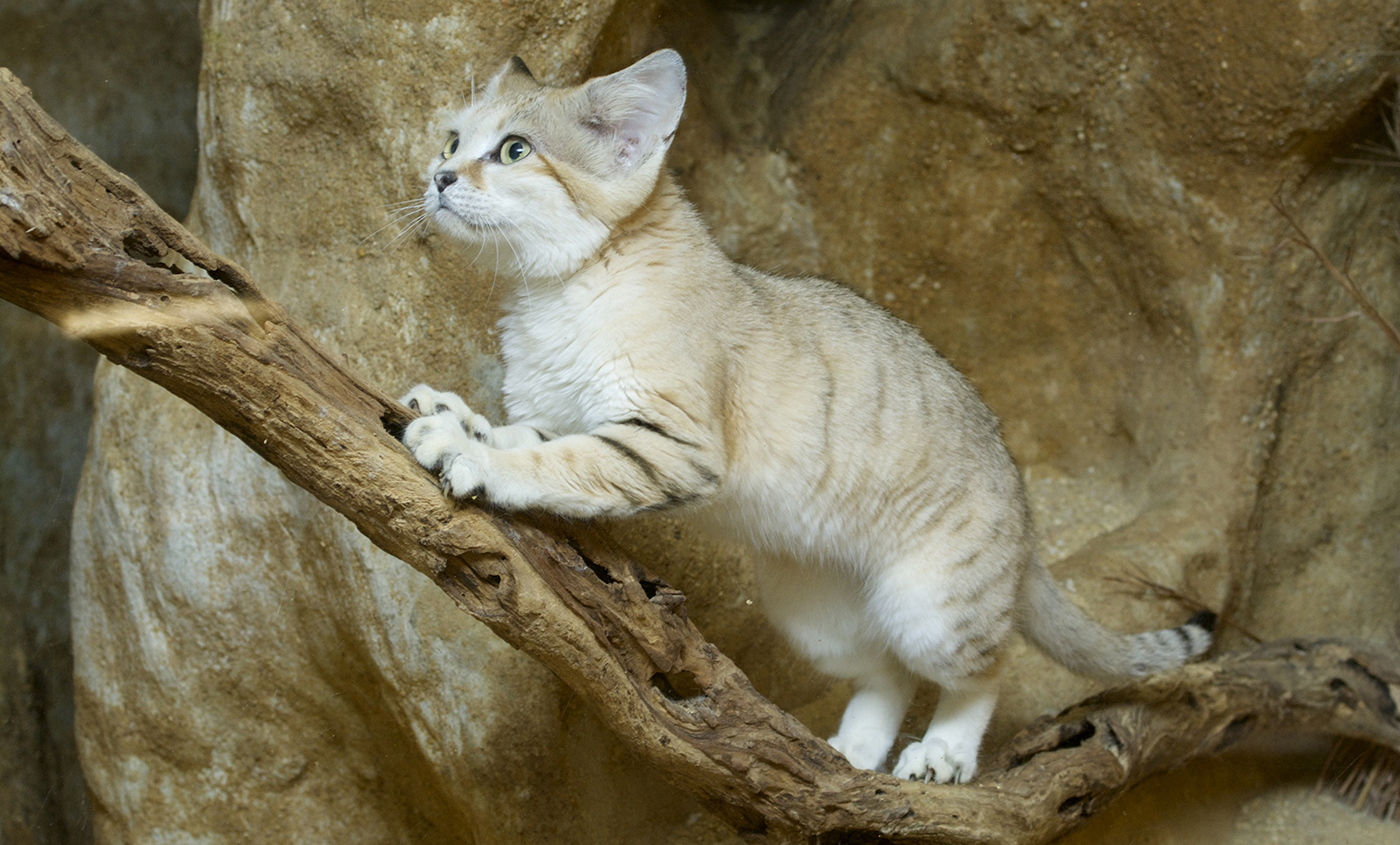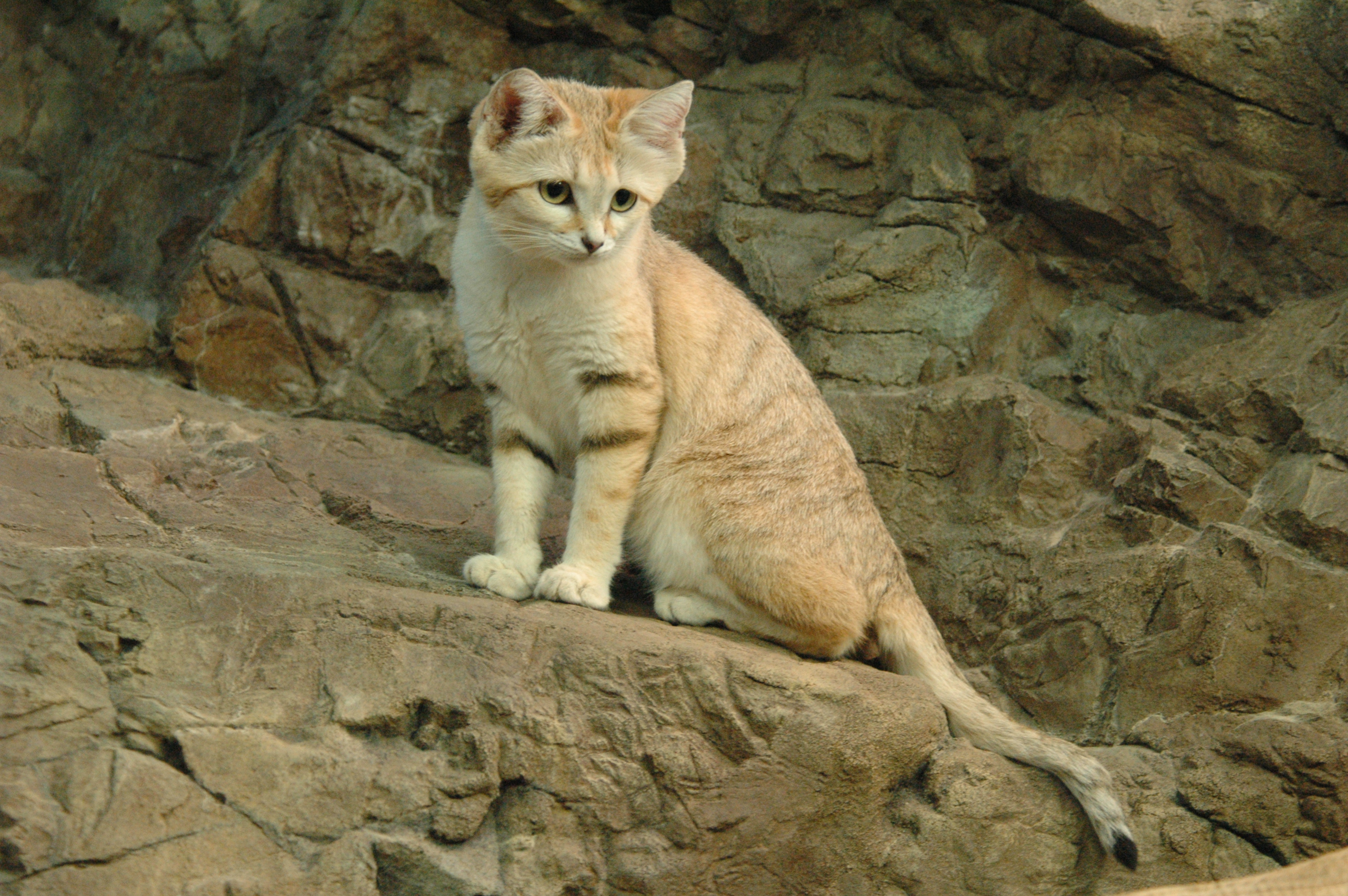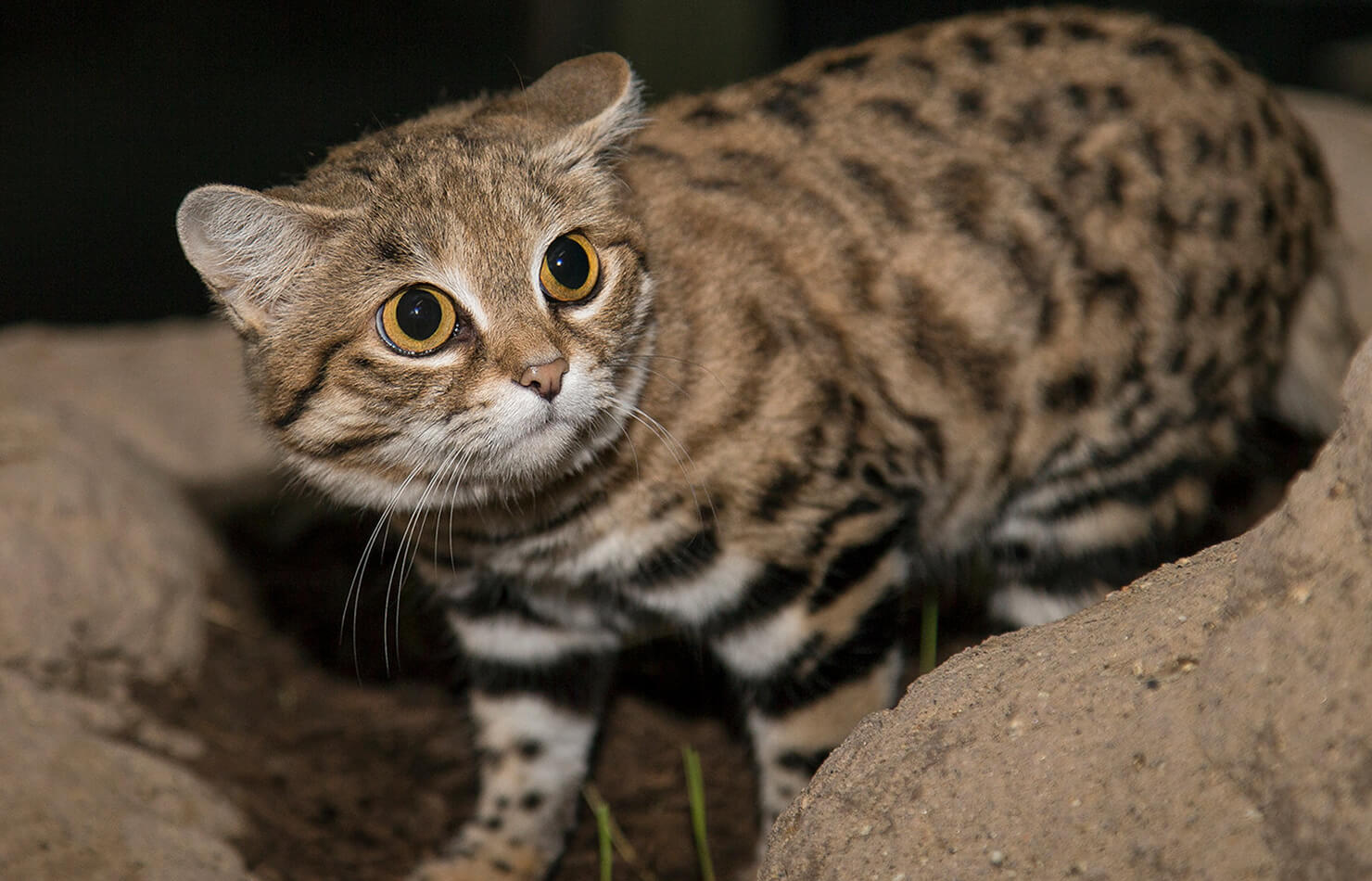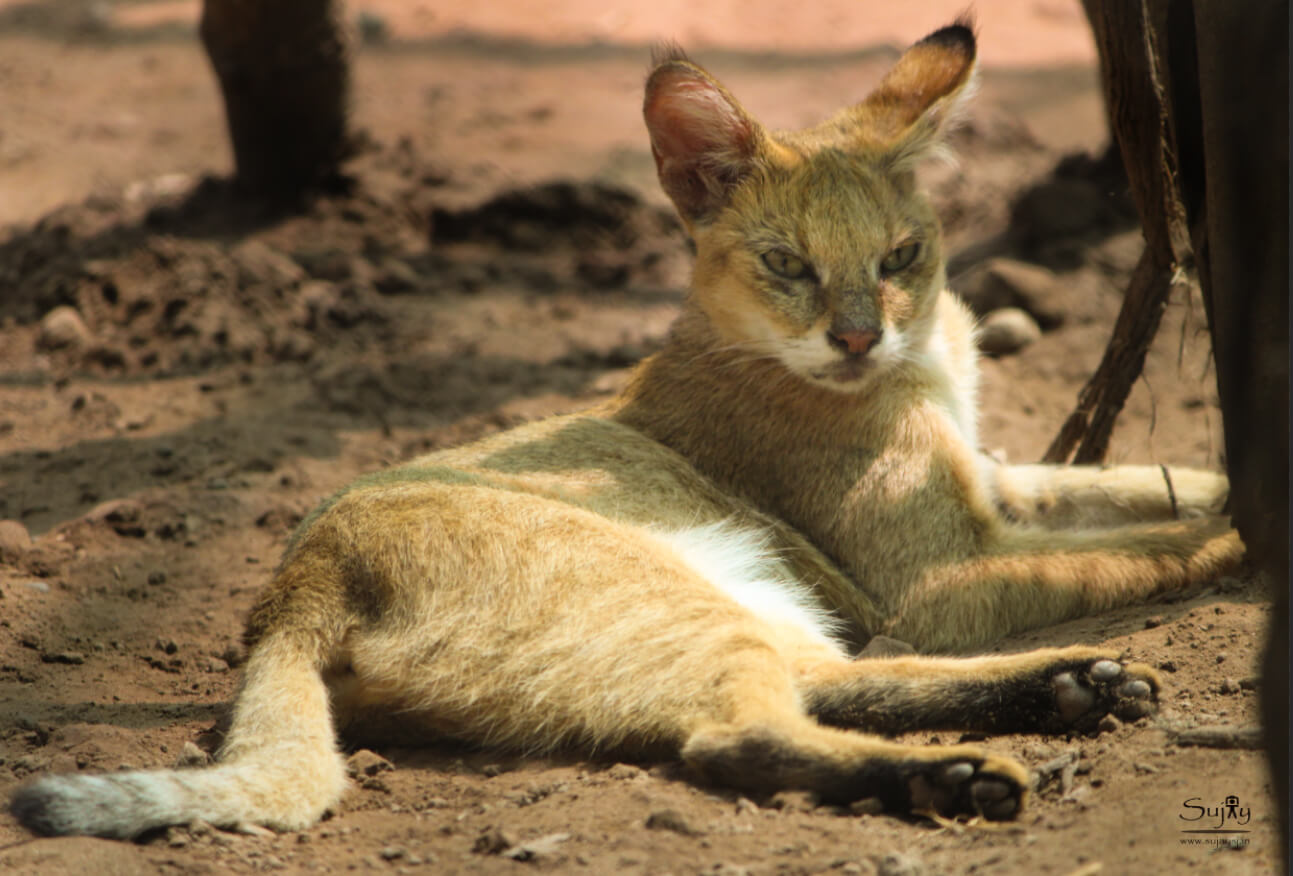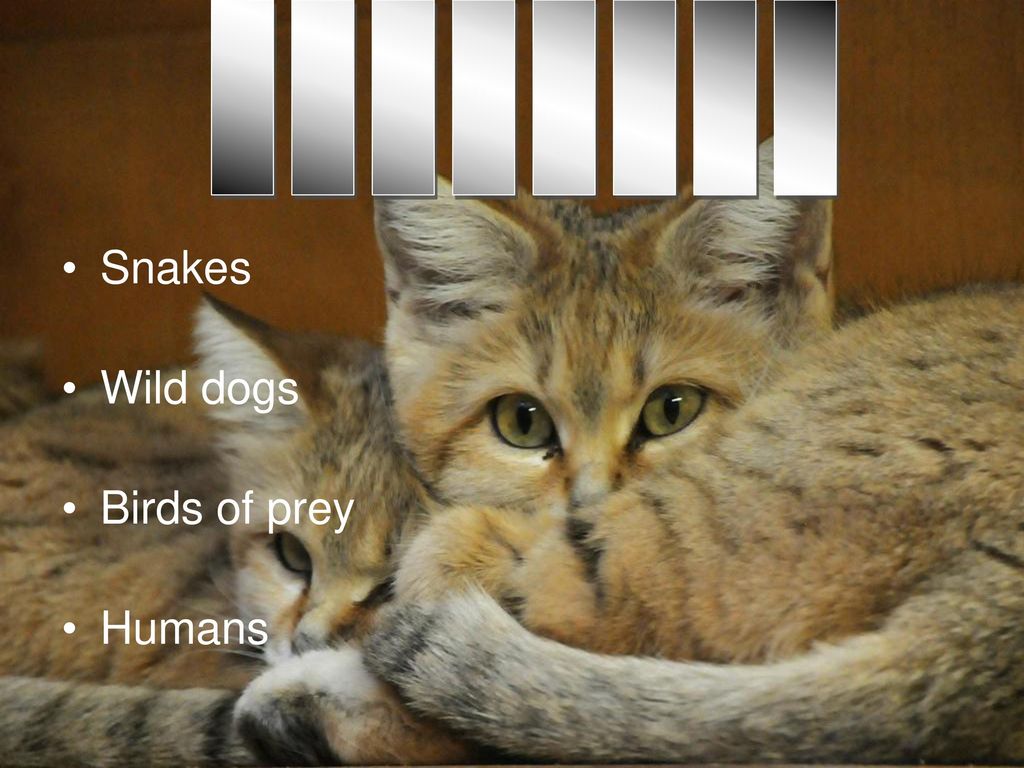Sand Cats Habitat Description
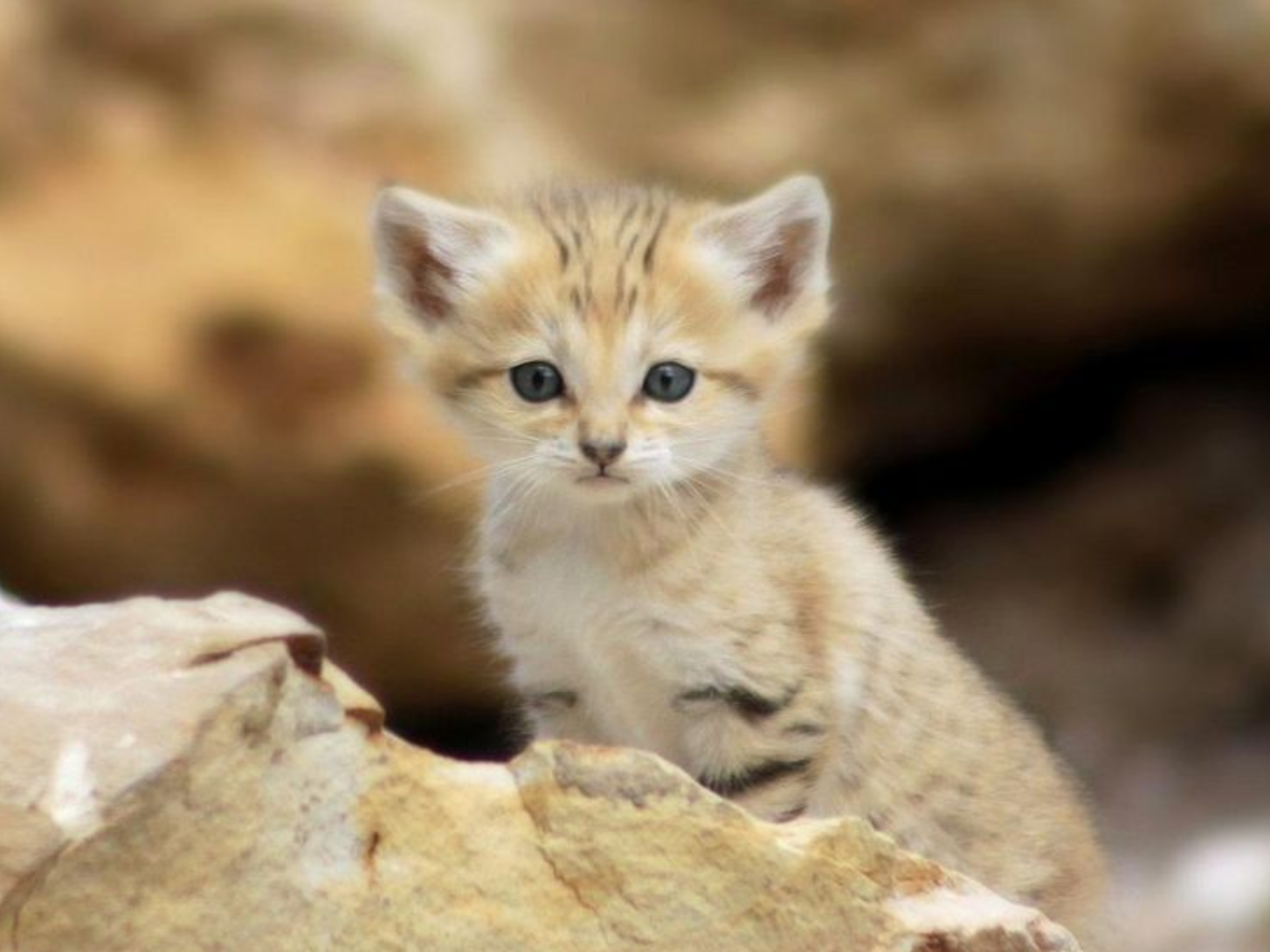
And allactaga tetradactyla and hamsters but also often takes sand grouse pterocles sp larks eg.
Sand cats habitat description. Black bands around tops of. In the northern areas between the Aral and Caspian seas the sand cat occurs only sparsely in the more claylike desert soils of the Ustyurt and Mangyshlak regions. From the Sahara through the Middle East to Turkestan.
Sand Cats are found in both sandy and stony desert. Sand cats are prolific diggers an adaptation not only for hunting rodents but for constructing or improving upon the. They manage to find food there where it is in principle very little.
Height Dense soft fur that is pale sandgray above and paler underneath. Sandy desert regions across Africa Central Asia and the Arabian Peninsula. Sand cats live exclusively in desert regions.
And in parts of central Asia. Number of sand cats decreased drastically in the past couple of decades due to habitat loss poaching recreational hunt and introduction of new species which compete for the prey and spread diseases. Its fur is of a pale sandy light brownish-yellow colour.
With its sandy to light grey fur it is well camouflaged in a desert environment. Conditions are extreme in the desert and temperatures can reach 124º F during the day and 31º F at night. The sand cat lives in areas far from water sources and is able to satisfy its moisture requirements from its prey.
Sand cats live in three distinct regions of the world. Its 57 cm short ears are set low on the sides of the head aiding detection of prey moving. The Sand Cat is found in deserts and other very dry habitats with sparse vegetation.







